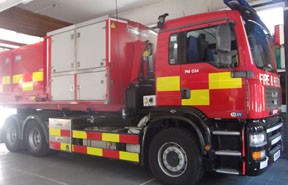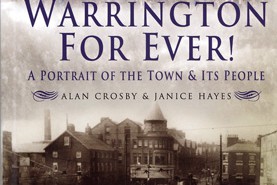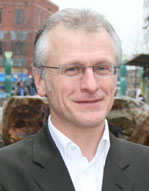About Warrington-Worldwide

Sprinkler system averts serious fire
A SPRINKLER system prevented a serious fire at a Warrington works this afternoon.
About Warrington-Worldwide

A SPRINKLER system prevented a serious fire at a Warrington works this afternoon.

The books listed in this section are on on the Amazon.co.uk website.
Unless otherwise stated Amazon.co.uk expect to be able to find this title for you within 4-6 weeks. However, please note that titles occasionally go out of print or publishers run out of stock.
Once you have ordered from the Amazon.co.uk website they will notify you when the book is dispatched.
 David Skentelbery
David Skentelbery
Journalist/On-line editor
Warrington’s most experienced journalist having worked in the town for 44 years. Started his career on the Knutsford Guardian and also worked on the Warrington Guardian before moving to the Lancashire Evening Post in Wigan and Warrington. Also worked on national newspapers in Manchester, including The Daily Telegraph and the Sunday Express.
Founded Orbit News in 1968. Born in Birmingham, grew up in the Knutsford area. Son of former Manchester Evening News theatre critic Tom Wildern Skentelbery.
Hobbies include cricket and is an active member of Glazebury Cricket Club. Former member of Knutsford and Lymm Oughtrington Cricket Clubs. Part-time Birmingham City fan!
 Gary Skentelbery
Gary Skentelbery
Group Editor
Editor of the group’s five magazines.
Trained as journalist in Warrington at the age of 15, joining family business straight from school.
Educated at Culcheth High School, learning photography at Warrington Collegiate Institute. Born in Liverpool, moved to Warrington three days later and has lived in the town ever since.
Grew up in Croft and later lived in Lymm for 10 years, followed by four years in Grappenhall.
Also Editor of Lymm Life, Village Life, Culcheth Life, Frodsham Life and warrington-worldwide magazines.
Married to Janet, two daughters, Amy aged 18 and Hannah aged 16.
Hobbies include tennis and is a member of Lymm Tennis Club, Lymm Rotary Club, Warrington Chamber of Commerce and long standing member of Business Network International. Trustee of Warrington Disability Partnership, Patron Warrington Foundation for Peace.
Editor of Insight Chamber of Commerce magazine. Supports Liverpool and Warrington Wolves for his sins! Appointed chairman of Warrington Town FC in 2010 after three years on the board of directors.
 Patricia Skentelbery
Patricia Skentelbery
Accounts
Born in Liverpool, has lived in Lymm for 20 years. Formerly ran the Art Centre gifts and crafts shop in Horsemarket Street, prior to town centre re-development.
Married to David, mother of Gary and in charge! Hobbies include gardening and tennis. Member of Stockton Heath Tennis Club. Supports Liverpool!
 Paul Walker
Paul Walker
Manager Graphic Design and Magazine production .
Born in Manchester, formerly served his apprenticeship as a compositor at Warrington Guardian.
Worked alongside Gary Skentelbery at Mercury Newspapers before helping to launch warrington-worldwide, Lymm Life and Village Life magazines.
Two children, Emma, aged 21 and Ben aged 18.
Follows Warrington Wolves but pretends to prefer Rugby Union!
Lesley Wilkinson
Journalist
FORMER Warrington Guardian reporter who has also worked in Public Relations for Greater Manchester Police and other organisations. Lives locally in Stockton Heath.
 Tony Record
Tony Record
Account Executive
Vast experience in the sales industry working with many blue chip companies.
Hobbies include music, walking and cycling.
His early career included time as a DJ. Unfortunately supports Manchester United.
 James Balme
James Balme
Account executive
Lives in Woolston, Warrington and is father to Hannah 22, Adam 20, and Laura 16.
James is in charge of developing the Frodsham and Culcheth Life publications.
He is well known in the Warrington area as an archaeologist and appeared in Channel 4’s 2007 Time Team series with Tony Robinson to excavate a site in Warburton near Lymm.
James has also appeared on Granada TV, BBC TV and radio on many occasions to highlight major discoveries that he has made in the Warrington area. Presenter of ‘The History Show’ on Radio General James is also responsible for editing and producing video news features for warrington.tv.
He writes and produces archaeological documentaries and features for various heritage projects in the North West including the Roman & Norman Middlewich Festivals.
 James Bryan
James Bryan
Graphic Designer
James, who lives in Old Hall, has always had an interest in graphics and computers when he is not fishing!
A keen member of the Penketh Old Hall Anglers Club.
He is a keen photographer and is a former student at Priestley College where he studied a BTEC graphic design. The youngest member of the team!
 Nick White Account Executive – Nick, who lives in Appleton Thorn, joined the team after previously working as Warrington’s Town centre Manager. Keen cyclist and runner who also has a great interest in music.
Nick White Account Executive – Nick, who lives in Appleton Thorn, joined the team after previously working as Warrington’s Town centre Manager. Keen cyclist and runner who also has a great interest in music.

Warrington’s famous Golden Gates
THE first Warringtonians lived in Bronze Age communities at Grappenhall, Winwick and Croft around 1000 BC. But the area was probably important even earlier – as a safe crossing point on the Mersey.
The Romans found Warrington to their liking and established a settlement known as Veratinum at Wilderspool around 100 AD. Over the next 300 years it became important as an industrial centre manufacturing metal products, glass and pottery, samples of which have been found as far away as Hadrian’s Wall.
By the 5th Century AD the Romans had gone and later the Saxons established a settlement near the site of the present parish church at Howley. Indeed, the Domesday Survey of 1086 suggests that it was the Saxons who built the original church, dedicated to St Elphin. Thelwall is the only local name to appear in a written record before Domesday referred to in the Anglo-Saxon Chronicle for the year 919. After the Norman Conquest, the town was placed under the management of Roger of Poictou, the Norman overloard of all lands between the Ribble and the Mersey.The Manor of Warrington was sublet to Paganus de Vilars, the town’s first baron, and later the Boteler Family who were to play a major role in the early development of the town. They encouraged the re-building of the old Saxon town by renting out plots for development by tradesmen. The town’s market was recognised by Royal Charter in 1277.
In 1495, the Earl of Derby provided a fine stone bridge over the Mersey which survived until the early 19th century. In 1586, Edward, the last of the Botelers, died virtually bankrupt.
Warrington played an important role in the Civil War in the 1640’s – largely through the strategic importance of the bridge. The Earl of Derby chose the town as his Lancashire headquarters during 1642. In April 1643 Parliamentarian troops led by Sir William Brereton attacked the town but suffered heavy losses in a battle at Stockton Heath and were forced to retreat when the Earl of Derby set fire to the town centre. However, the Royalists were eventually beaten when the town was beseiged by Parliamentarian forces led by Colonel Assheton and Sir George Booth. In 1648, Oliver Cromwell (pictured) himself stayed in the town, lodging in Church Street after routing a Scottish force at the Battle of Red Bank, near Winwick.  In 1659 Warrington’s loyalties changed again when the new Lord of the Manor, another Sir George Booth, began an unsuccessful attempt to restore the Stuart monarchy by proclaiming Charles II King.
In 1659 Warrington’s loyalties changed again when the new Lord of the Manor, another Sir George Booth, began an unsuccessful attempt to restore the Stuart monarchy by proclaiming Charles II King.
After the Civil War new industries came to the town, bringing wealth. Sail making, pin-making and copper smelting were established. In 1703, the Cairo Street Unitarian Chapel was established. When Daniel Defoe visited the town in the early 18th century he spoke of a “large and populous, old built town, rich and full of good country tradesmen.” The Mersey continued to make Warrington an important place and local industrialist Thomas Patten financed improvements to the river between Warrington and Liverpool to service his copper smelting works at Bank Quay. The Patten family prospered and in 1750 built the imposing Bank Hall which, more than a century later, was sold to the town by the family and became the Town Hall.
Warrington grew in importance as an industrial centre, helped by its position on the Mersey and the growing importance of canals. The Sankey Canal and the Bridgewater Canal ensured water communications remained dominant. Around the same time, the town took on an important role in the nation’s intellectual life through Warrington Academy, which attracted scholars of nationwide reputation, including Joseph Priestley, a noted philosopher and scientist.
Warrington celebrated the accession of Queen Victoria in 1837 with the opening of a new bridge over the Mersey, named in her honour. Ten years later the town aquired the status of a municipal corporation and under the first Mayor, William Beamont, began planning the renewal of the town centre. In 1899 the town assumed the status of County Borough, prosperous and still growing as a result of its position on the new railway network and the Manchester Ship Canal.
In 1913, King George V unveiled the first section of the present Warrington Bridge, again emphasising the importance of the river crossing. The town suffered little during the two World Wars – although the day German fighters bombed a garden party at Thames Board Mills is still remembered as one of Warrington’s blackest days. The United States Army Air Force base at Burtonwood became home for thousands of American servicemen and, after the war played a leading role in the Berlin Airlift.
In 1968, Warrington was designated a New Town, clearing the way for massive developments in the Risley, Great Sankey, Burtonwood and Appleton areas which are still continuing. In 1974, local government reorganisation led to the enlargement of the borough to include surrounding rural areas including Stockton Heath, Appleton, Lymm and Culcheth. Warrington became known as the “crossover town” because of its position at the intersections of the M6, M56 and M62 motorways. This strategic position could be said to be the modern equivalent of the old river crossing at Warrington Bridge and has certainly played a major part in attracting new industry.
Warrington is now in a transitional stage, changing from the “cloth cap” factory town born out of the Industrial Revolution into a modern centre for high technology industry. The Borough Council’s designation as a unitary authority in 1998 is another step in the town’s progress and another reason why it has become one of the most prosperous towns in England.
warrington worldwide is the town’s best read newspaper on the internet with thousands of people a day logging on every day.
Launched at Business Connections in April, 1999, it receives an average of 100,000,000 page impressions a month from more than 5,000 unique visitors A DAY from all over the world including:
Warrington,America, Argentina, Australia, Austria, Belgium, Bermuda, Brazil, Canada, Cayman Isles, China, Cyprus, Czech Republic, Denmark, Estonia, Finland, France, Germany, Gibraltar, Greece, Guatemala, Holland, Hong Kong, Iceland, Ireland, Israel, Italy, Lebanon, Japan, Malaysia, Namibia, New Zealand, Norway, Peru, Portugal, Qatar, Russia, San Marino, Saudi Arabia, Singapore, Slovenia, South Africa, Spain, Sweden, Switzerland, Thailand, Trinidad & Tobago, Turkey, Vietnam, United Arab Emirates and many more.
The website is linked to a free monthly community magazine which is available throughout the town and surrounding areas and community magazines Lymm Life, Village Life, Culcheth Life and Frodsham Life.